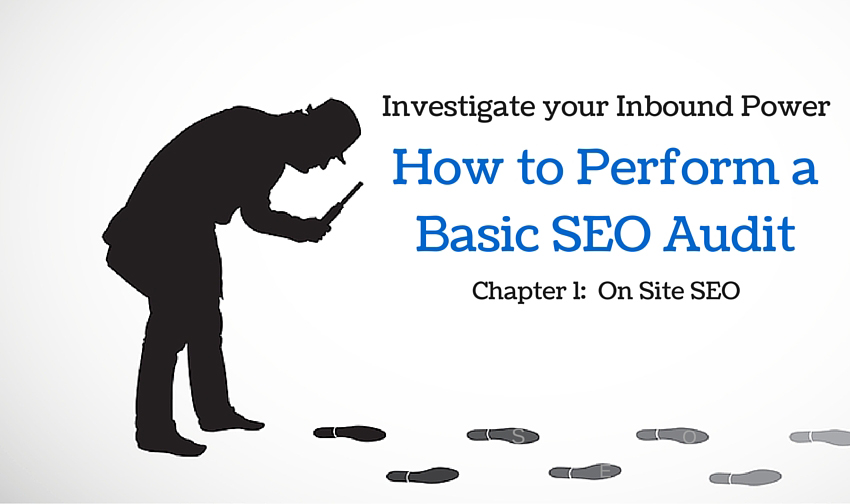Conduct Your Own SEO Audit: Part 1

Start SEO with your best foot forward: How to conduct an SEO audit part 1
You can't walk before you crawl. Similarly, you can't rank well if you don't know how you're being crawled – by the search engines. If it's been up for any amount of time, your site already has a certain reputation you're going to need to build on with your SEO efforts. The only way to know where you stand is to conduct a SEO site audit.
Before we dig into how to perform your audit, you must remember that putting all your efforts toward SEO may not be the reason your site isn't performing at peak. There are other factors that matter, so make sure SEO is the issue, or know how to build your site for optimal search.
Site audits are often advertised as extremely complicated things requiring the help of a professional. While it's true that, as with other aspects of SEO, a thorough technical site audit can benefit from professional assistance, it is possible for the average site owner to conduct a basic audit. Doing so will give you an idea of your site's position before you make any SEO decisions.
There are two main areas you need to focus on when performing your site audit: on-site and off-site. In this post we'll be having a look at the on-site factors you need to audit before you SEO.
On site factors
There are a lot of external factors influencing where your company stands on the internet, and because of this a lot of people put their website on the back burner. However, the features of your actual site are critically important to the success of your SEO. Think of them as the foundations of your presence on the web – anything else is a pretty extra.
Areas to look at on your site include:
*URLs – the addresses of your pages are important. They need to make logical sense, and so having a bunch of numbers is a very bad idea. Instead of having www.mybusiness.com/blog/12/post-12345, you should be looking at URLs that describe the page, eg. www.mybusiness.com/my-fantastic-blog-post-on-rabbits.
*Content – if you have been paying any attention to the world of SEO, you'll know that content is a vital part of succeeding. Content needs to be original and fresh. Copyscape is a useful tool to make sure your content isn't being duplicated anywhere.
The presentation of your content is important too. Instead of publishing it as unformatted text, you should be labelling your content according to the appropriate content tag – H1 for titles, H2 for subheadings, and so on. This lets the search engines pick out important areas.
*Site structure – your site needs to have the simplest structure possible. This may not be the easiest thing to determine: having all of your blog posts listed under monthly sub-menus may seem logical, but it doesn't make important posts easy to find. Think about the pages you need people to find and put them forward in the architecture.
Another thing to think about with your site structure is internal linking. It's easy to overlook the value of internal links in the rush to get backlinks, but internal links do have value.
*User experience – Search engines are looking more intensely at user experience, and no wonder. Users are getting ever more demanding. Check UX in terms of your 404 page, ease of access to important pages and page load speed.
Stay tuned for part 2 where we discuss external or offsite SEO factors.

